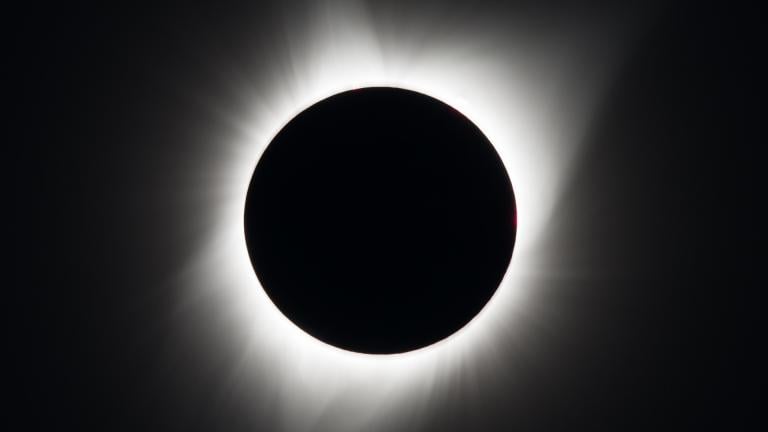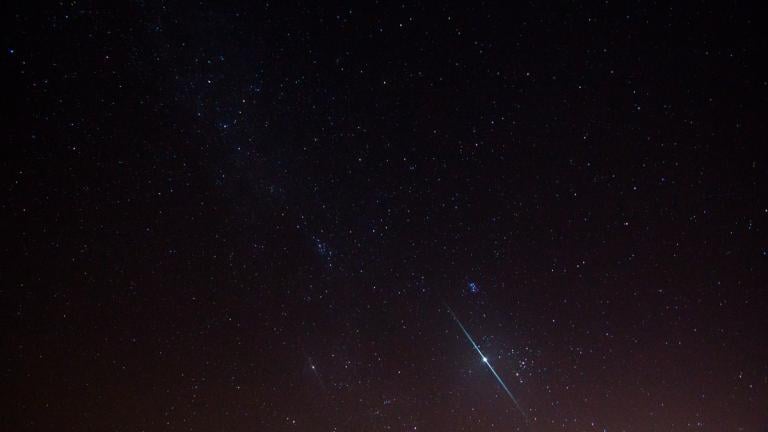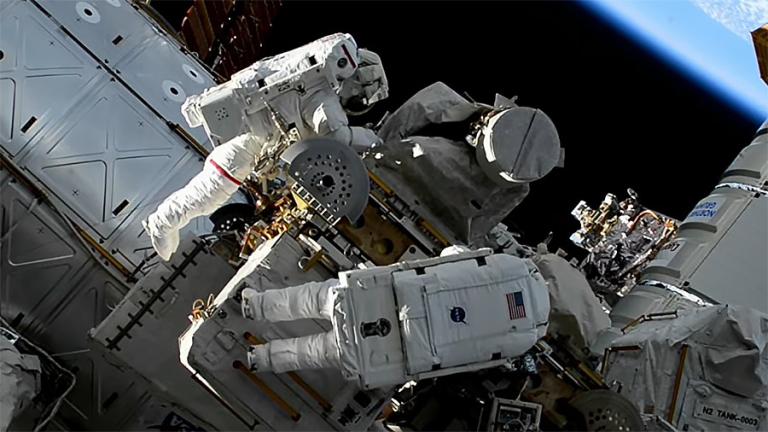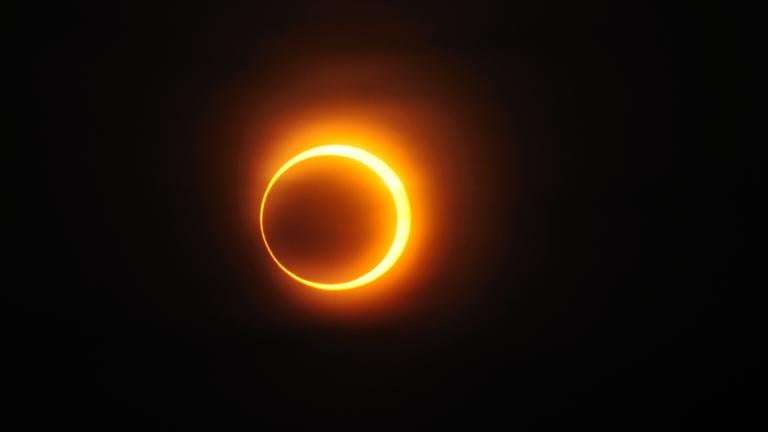This Webb image shows a massive galaxy cluster called WHL0137-08, and at the right, an inset of the most strongly magnified galaxy known in the universe’s first billion years called the Sunrise Arc. (NASA / ESA / CSA)
(CNN) — Astronomers have used the James Webb Space Telescope to observe Earendel, the most distant star ever detected.
Earendel is so distant that the starlight glimpsed by the Webb telescope was emitted within the first billion years of the universe. The universe is estimated to be about 13.8 billion years old.
Previous estimates suggest the star is 12.9 billion light-years away from Earth, but given the expansion of the universe and how long the light has traveled to reach us, astronomers believe Earendel is currently 28 billion light-years away.
The star’s name derives from Old English words that mean “morning star” or “rising light.” The Hubble Space Telescope first spotted Earendel in 2022.
Webb’s observations have revealed new insights about the incredibly distant star. Earendel is a massive B-type star about 1 million times more luminous than our sun and more than twice as hot.
The star is in the Sunrise Arc galaxy and was only observable because a massive galaxy cluster called WHL0137-08 that exists between Earth and Earendel magnified the distant object.
This phenomenon is called gravitational lensing, which occurs when closer objects act like a magnifying glass for distant objects. Gravity essentially warps and magnifies the light of distant background galaxies. In this case, the cluster of galaxies intensified the light of Earendel thousands of times.
Massive stars such as Earendel typically have companion stars, and while astronomers didn’t expect to be able to spot one, the colors detected by Webb suggest the potential presence of a cool, red companion star.
Webb’s capabilities of peering into the distant universe and observing in infrared light, which is invisible to the human eye, also picked up on details in the Sunrise Arc galaxy. The space observatory spotted areas of star birth and small clusters of stars.
Astronomers continue to analyze the data from Webb’s observation to determine the precise distance of the Sunrise Arc galaxy.
Studying extremely distant stars and galaxies that originated closer to the big bang can fill in gaps astronomers have about the early days of the universe and provide a glimpse of what our Milky Way galaxy might have looked like billions of years ago.
Webb’s ability to study such a distant, small object is encouraging for astronomers. It may be possible eventually to spot the very first stars born from raw elements such as hydrogen and helium just after the birth of the universe.
The-CNN-Wire™ & © 2023 Cable News Network, Inc., a Warner Bros. Discovery Company. All rights reserved.








